Students from Afghanistan present their Art in the townhall of Graz
================================================================
“We have each other| this is what we always had”
(a cooperative action between EDICs Potsdam, Brandenburg and Crete)

Workshop with Europe Direct Crete under the title “Immigrants, refugees and media” in cooperation with EICs Potsdam, Brandenburg and Grete.
The workshop took place in our school on 4rd of April, 2017 and the 24 participants were pupils from 1st Class of Junior High School aged 13 years old. The workshop lasted about 2 hours and it was part of the Educational Activity “Activities for Experiential learning in Human Rights and Refugees Rights” UNHCR. This package of activities is part of the project called “Symbiosis: Action plan for the promotion of tolerance and the prevention of racism within school” which was implemented by UNHCR with the economic support of Stavros Niarchos Foundation.
Objectives
The objectives of this workshop are the pupils to understand the way the refugees and immigrants see Europe and develop feelings of empathy, to exercise their critical thinking in relation to what they are viewing, hearing and reading about refugees and immigrants, and to understand the role of media in manufacturing false images and in general manipulating public opinion. In more general terms it aims to develop pupils’ cultural awareness, acknowledgement and respect for different cultures, tolerance and respect.
Preparation
Before the workshop the pupils were exposed to related mass media material including Greek newspaper headlines,
photographs and a video with a Syrian girl launched by UNICEF . Then, it followed a reflection to what extend media objectively present the news to public.
During the workshop - Brainstorming
The pupils are posed the following questions and a short discussion of the topic begins:
- How is Europe presented to and how it is compared to the world? Think of the role of mass media, tourism, TV and the advertisements.
- Do the immigrants consider Europe as an “El Dorado” or do they believe that Europe is a kind of a “fortress” for them? What do these terms mean?
- What attracts immigrants and refugees in Europe? (The difference between the words “immigrants” and “refugees” has already been explained)
The pupils list the reasons that immigrants and refugees flee from their countries and why they choose Europe for their destination.
A 2-minute film is shown to the pupils which presents immigrants and refugees that arrived totally exhausted with a tiny boat to the shore of the island of Lampedusa, Italy, which is one of the southernmost borders in Europe.
Teamwork
The pupils are divided in groups of 4 members; 2 pupils take the part of the immigrants/refugees - one adult, one teenager – and 2 pupils take the roles of reporters. The reporters have to interview the immigrant and the refugee asking the reasons that they have arrived here. Additional information about the reasons of fleeing, the country of origin or family background is given if needed.
As for the reporters, one reporter is given an extract from the UNICEF guidelines on mass media and the protection of child and the other is given the information that he/she is relatively new in the job and that this is his/her first report. The teams take some minutes to improvise their dialogues. They also have to decide the setting of their interview (place, time, etc)
The groups present their scenes to the audience.
A group discussion follows about the different styles of interview without any particular analysis. Then, the guidelines given to the reporters are announced.
The pupils choose one of the roles they have previously watched (immigrant/ refugee/ reporter) regardless of whether they have played it themselves or not. Depending on their role each pupil sits in a quiet place and works on it undisturbed. Those who chose the role of an immigrant/refugee write an imaginary diary entry about their interview experience. Those who chose the role of the reporter write a short report comment about the incident and the interview for the newspaper or the channel the work for (technique “writing in role”₁)
Review - Reflection
In the end the whole group of the pupils along with the coordinators discussed about the activity. More specifically, the discussion was based on the following questions:
- How was it like to play a role from a specific perspective?
- How was it like to face a different from you situation and improvise it?
- How much were the texts, that pupils wrote, influenced by the role they acted?
- How different approaches did the groups have even though they started from the same pictures-stimuli? Why?
- Where the approaches/reactions we saw realistic? Have we seen any similar ones presented in mass media?
- Is the presentation of similar topics from the mass media always unbiased and objective? If not, what factors influence it?
- How influential was the style of reporters’ writing by the code of conduct which was given?
=============================================================================================
Workshop in the Museum of Contemporary Art, Rethymno, Crete, Greece
 Twenty-five pupils from High School of Gazi attended a museum educational programme about the issue of refugees and immigrants. The pupils had the opportunity to take part in experiential activities organized in the Museum aiming at stimulating their feelings as well as to understand how current social situation, such as immigration, are pointed out through contemporary art.
Twenty-five pupils from High School of Gazi attended a museum educational programme about the issue of refugees and immigrants. The pupils had the opportunity to take part in experiential activities organized in the Museum aiming at stimulating their feelings as well as to understand how current social situation, such as immigration, are pointed out through contemporary art.
======================================================================================
Visit to the Accommodation Centre for Asylum Seekers in Anogia, Crete
On the first day of our meeting in Gazi we visited the Accommodation Centre for Asylum Seekers in Anogia, Crete. The centre is curently hosting 24 young boys coming from places around Pakistan and Afganistan. The young boys have fleed their countries because of the extreme war conditions in the area and asked for asylum in Greece. The centre was created in 2000 by the Younth and Lifelong Learning Foundation (Ι.ΝΕ.ΔΙ.ΒΙ.Μ.) as the first accommodation centre for unaccompanied minors and it is co-financis by the European Refugee Fund, in collaboration with the Ministry of Health and Social Solidarity at first and the Ministry of about subsequently. It is considered a model centre and officialy form part of the accommodation structures of Greece.
50 pupils from the Erasums+ programme had the chance to meet the young boys and spend some quality time with each other sharing experiences, interests, feelings and thoughts.
During the visit the children were divided into 6 multicultural groups running 6 parallel workshops; they collaborated with each other, used their imagination and creativity to work on an activity and presented their results. The final results were a mingling of cultures and personalities sharing a meal.
Literature workshop
The children are given a picture in graffity that depicts the face of a muslim woman under the title "I dream of.." The pupils discuss about their impression on the picture and then write a short text or poem inspired by the picture.
You can watch snapshots of the workshop here.
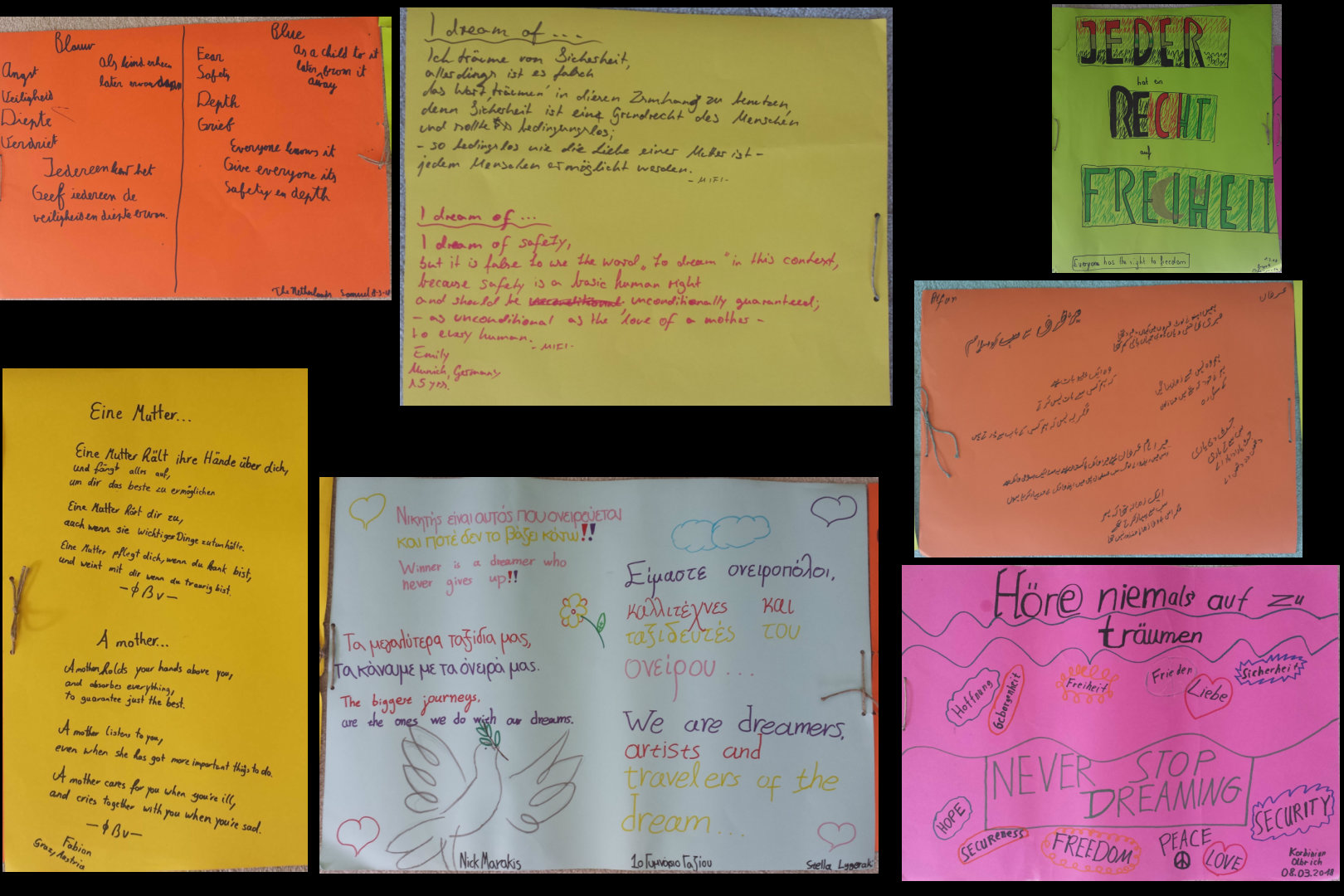
Drama workshop
The children are given a picture of a mother holding her baby child and walking in the desert. Her other two children are on the left and on the right. The group is asked to imagine what happened / was happening before the picture was taken and what is going to happen after that.
You can watch snapshots of the workshop here.
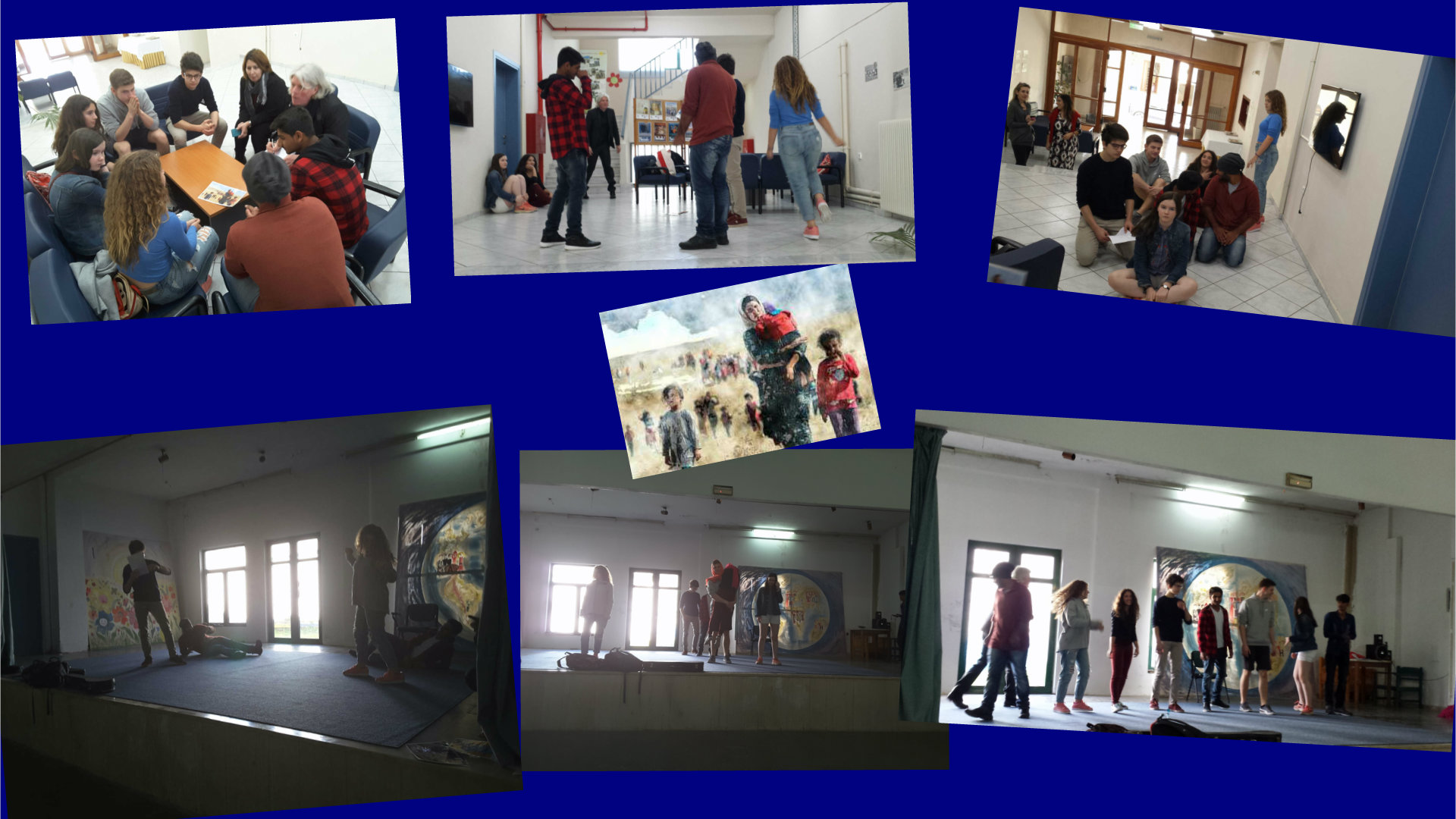
Dance workshop
The children are given two pictures; the first picture shows a woman holding the fences of the boarders and the second picture shows a bird flying free from the fences. The group has to prepare a chorography using as a music background the famous song "Imagine" by John Lennon.
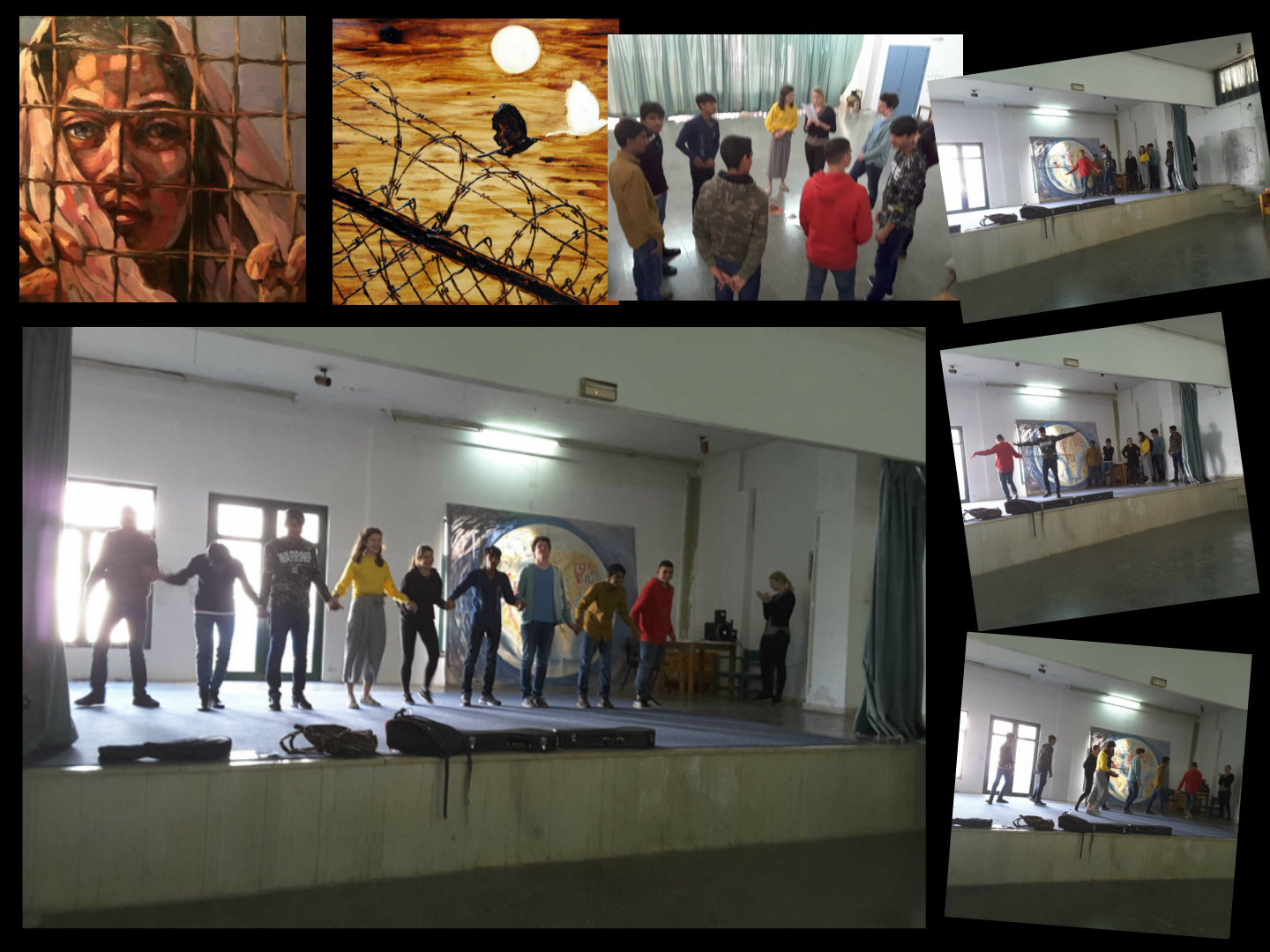
Music workshop
The children are give two paintings showing boats full of people. They decide to sing a traditional Cretan song related to boats that cross the sea all the time.
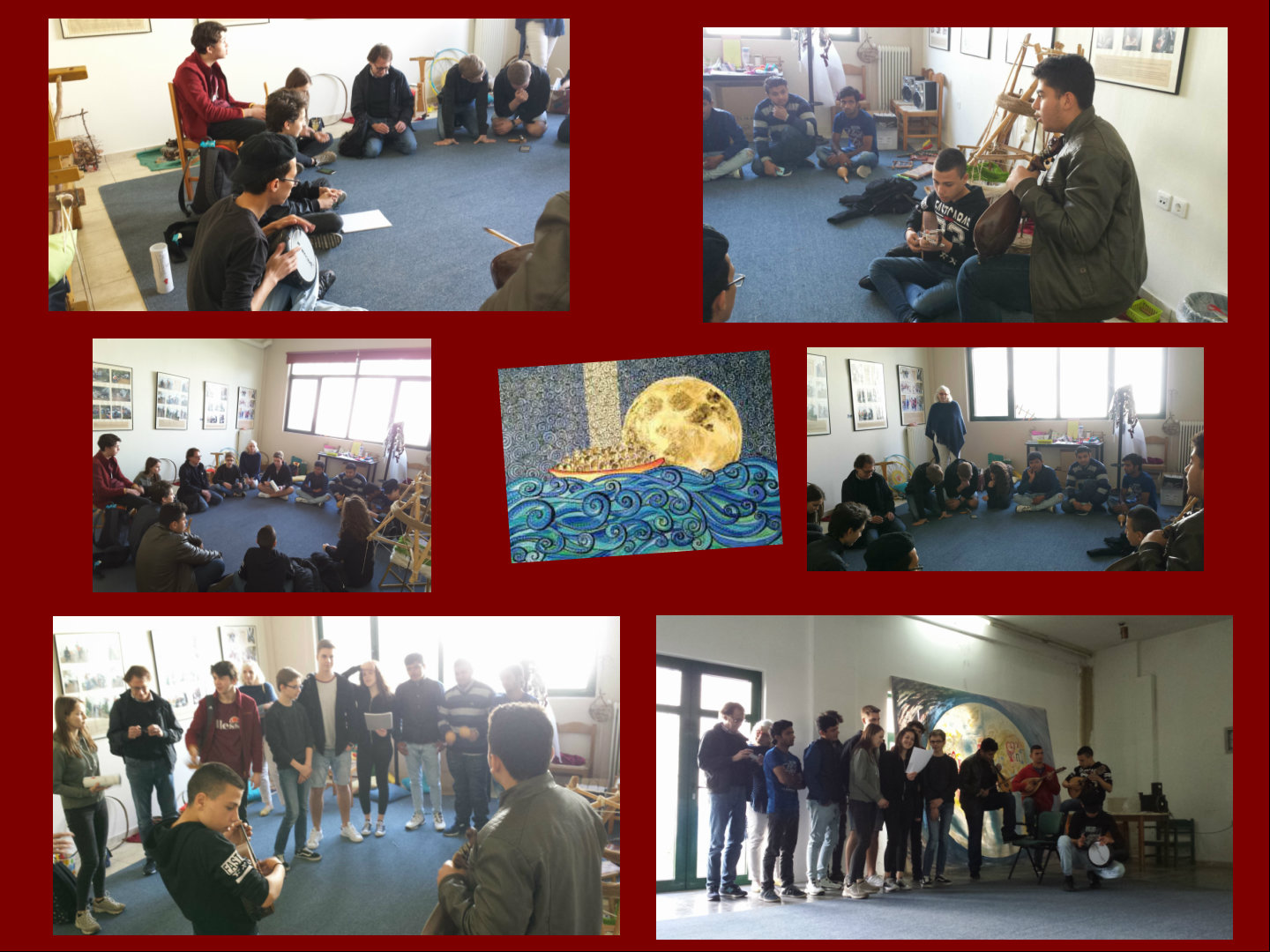
Art workshop
The children are given the lyrics of the popular song "What a wonderful world" by Louis Armstrong and are asked to depict in a piece of paper using paints how a wonderful world looks like in their minds. Then, they show their work and altogether the sing the song "What a wonderful world".
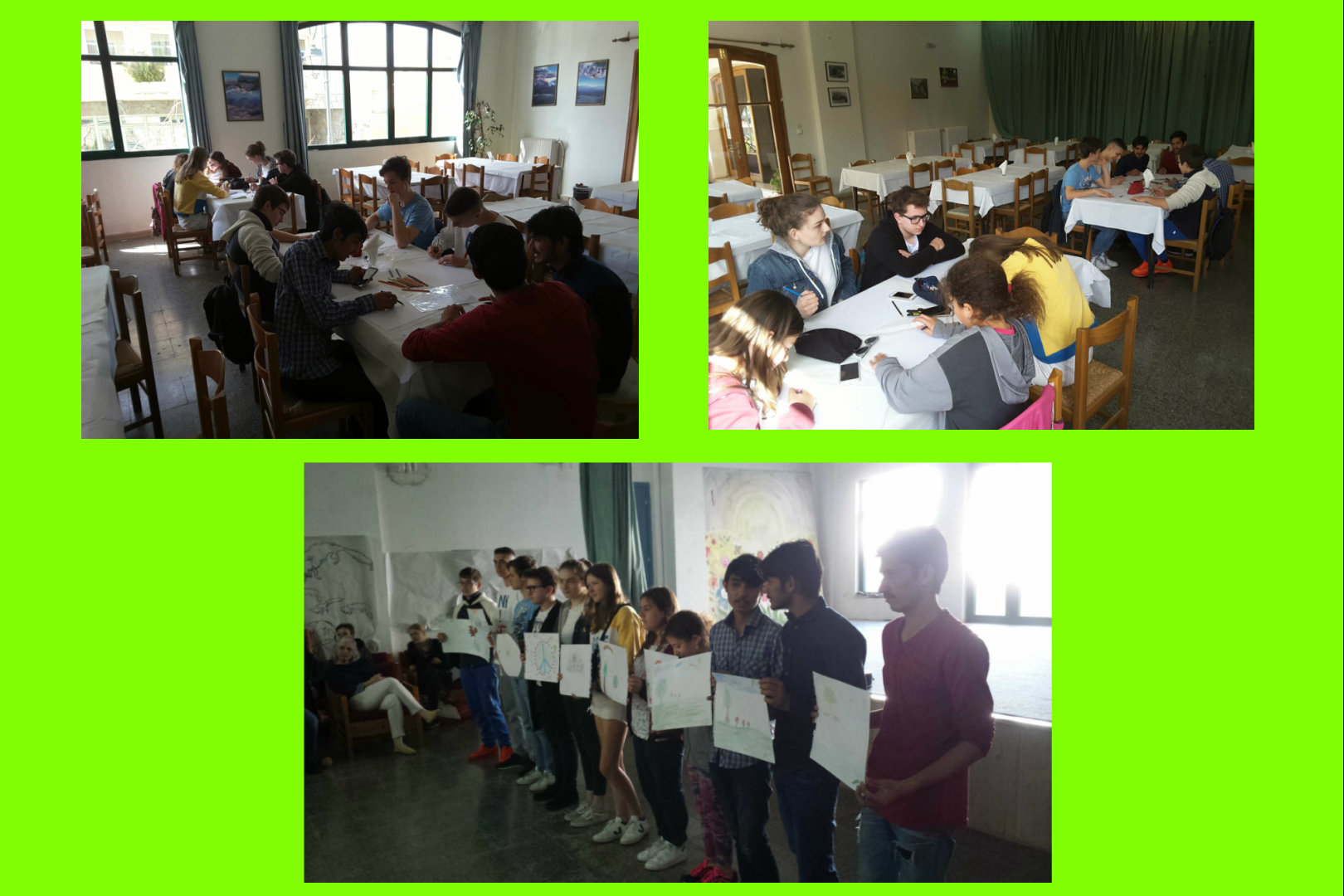
Cooking workshop
The children have to prepare traditional dishes from their countries in the kitchen. The menu includes a lot of them such as dakos (Greek), souvlaki (Greek), patatosalad (Dutch), snitsel (German), tuna salad (Austrian), pizza (Italian), spicy chicken with rice (Pakistan) and many more.
You can watch snapshots of the workshop here.
After that hard work we all enjoyed a multicultural meals that the cooking team made for us with LOVE!
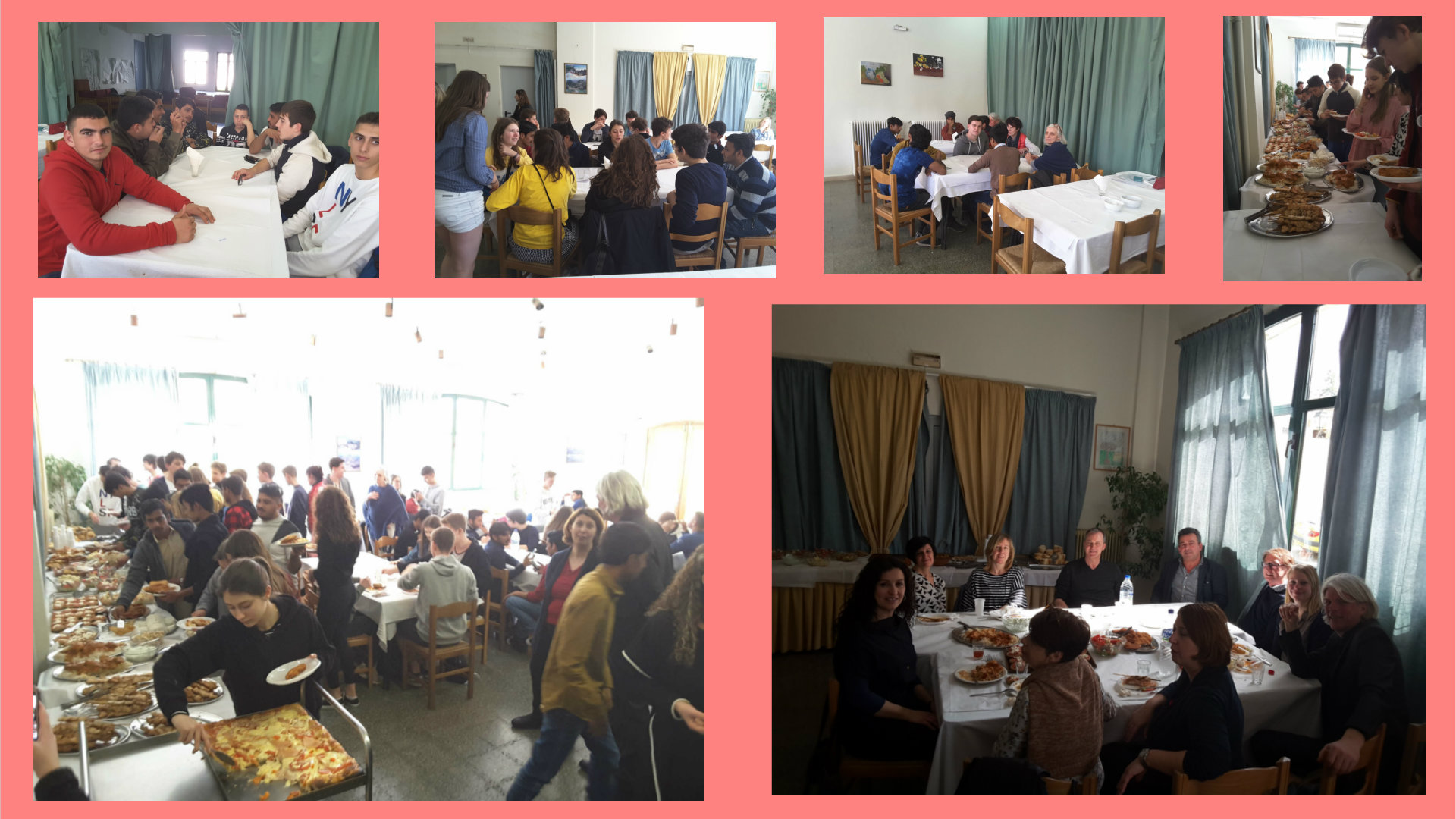
Meeting in Rein
snapshot from the local newspaper in Heraklion, Crete